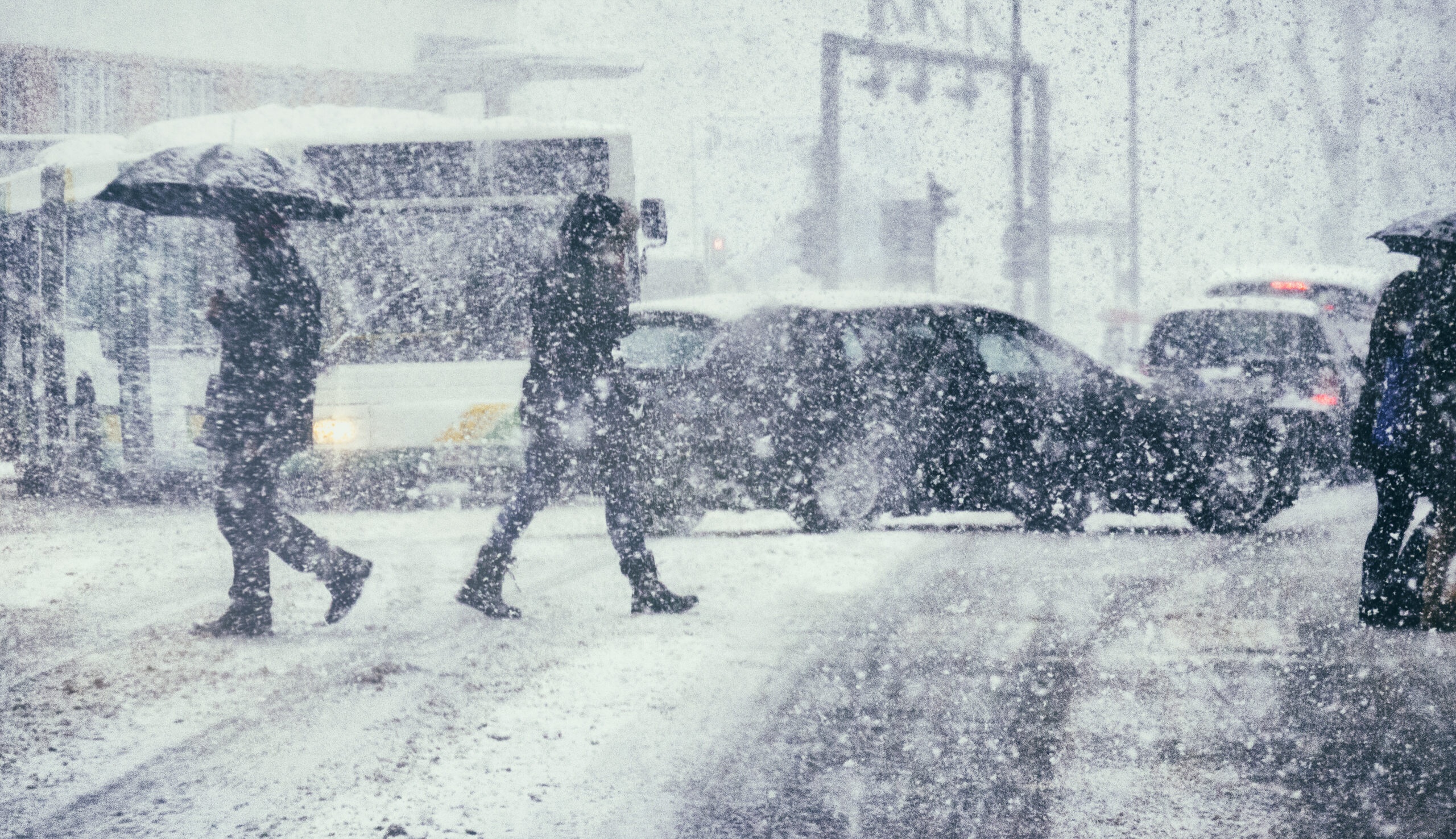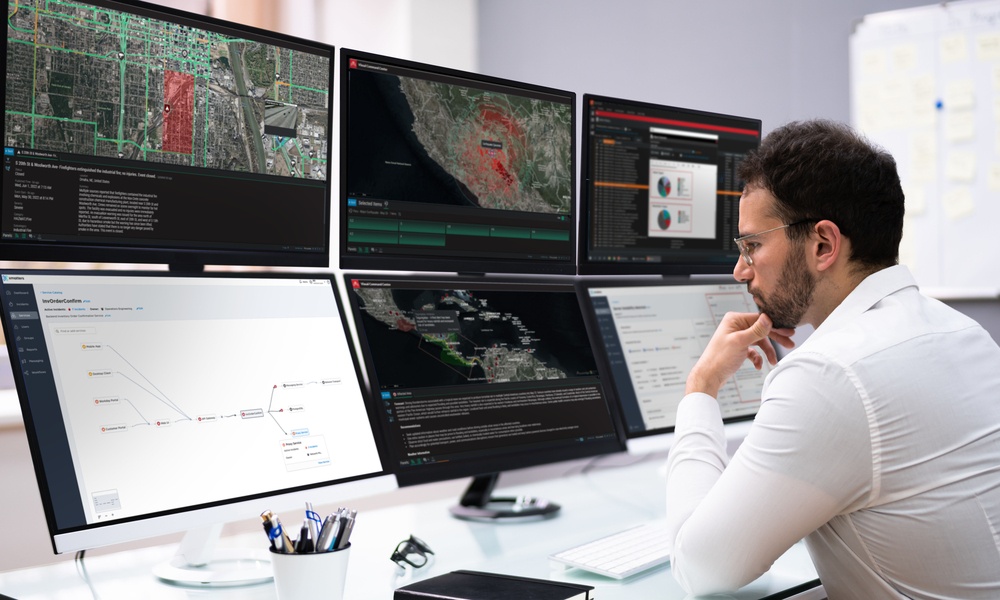Winter safety tips for employees in private and public sectors

Winter storms can significantly impact both private and public sectors, affecting their people, operations, and critical infrastructure. The NOAA stated that, in 2022 alone, the total cost of winter storms in the United States was 8.7 billion dollars. According to the European Environment Agency, “Between 1980 and 2022, weather- and climate-related extremes caused economic losses of assets estimated at EUR 650 billion in the EU Member States, of which EUR 59.4 billion in 2021 and EUR 52.3 billion in 2022.” Whether you are responsible for your organization’s operations and safety or public safety, being well-prepared for winter weather is crucial.
In this blog, we will provide valuable insights for both private and public sectors and a comprehensive checklist to navigate through the challenges posed by severe winter weather. For more resources on inclement weather preparedness, visit our page.
Winter safety tips for the private sector
When you manage risk for a business, we know that protecting your employees is your number one priority. The checklist below serves as a starting point so you can ensure your organization has the right pieces in place to keep your employees safe during winter storms.
Use multi-modal communication strategies
Develop a plan to stay in touch with affected individuals before, during, and after a winter storm. This includes utilizing various communication channels such as email, SMS, phone calls, and social media updates to keep everyone informed and safe. Also, ensure that you follow OSHA guidelines to advise employees on proper winter safety, such as what to do in the event of frostbite, hypothermia, and other dangers related to extreme cold.
Prepare for power outages
Ensure you have accurate contact information for employees, customers, and stakeholders to stay connected during power outages. This will help in coordinating emergency response efforts and providing timely updates. Also, make sure to develop contingency plans if the message sender is in an impacted area.
Implement an emergency notification system
Implement an effective emergency notification system that can quickly disseminate critical information to a large number of people. This can include automated alerts, sirens, or mass messaging platforms to reach individuals across different locations.
Automate severe weather alerts
These alerts are crucial for organizations to ensure timely communication and response during winter storms. By integrating weather monitoring systems and leveraging advanced technologies, organizations can receive real-time alerts about severe weather conditions, such as blizzards, heavy snowfall, or freezing temperatures. These automated alerts can help organizations quickly disseminate information, enabling individuals to take necessary precautions, adjust schedules, and make informed decisions to minimize risks and ensure the safety of all involved.
Winter safety tips for the public sector
As winter storms continue to pose threats to public safety, organizations responsible for keeping the public informed and safe need to be prepared. By following a comprehensive winter storm preparedness checklist, public authorities can ensure the community’s well-being and minimize the impact of severe weather conditions. In this section, we will explore the necessary steps that government agencies should take to protect lives and maintain essential services during winter storms.
Review emergency operations plans
Ensure plans are up to date based on past events and potential risks. A plan should outline specific procedures and protocols to be followed during severe weather events. It should include clear guidelines on assessing risks, activating emergency operations centers, and coordinating with relevant authorities. A plan should also designate roles and responsibilities for key personnel, ensuring a coordinated and effective response.
Implement an emergency notification system
Invest in and utilize an emergency notification system to alert residents about impending winter storms, evacuation procedures, and other critical information. These systems, or specific solutions developed for public safety, can help managers know about risk earlier, respond faster, and reach more people to ensure no one is left behind.
Conduct safety drills
Emergency managers should conduct regular safety drills to familiarize staff with emergency procedures and identify gaps in preparedness. It is beneficial to simulate various winter storm scenarios including power outages, icy conditions, and heavy snowfall. These drills provide an opportunity to test communication systems and evaluate the effectiveness of emergency response plans.
Initiate community outreach and education
Implement community outreach programs to educate residents about winter storm preparedness and response measures. Establish communication channels with local media outlets to disseminate information to a broader audience and encourage residents to stay informed. These steps can be made easier with resident connection solutions, which are developed specifically to help public authorities reach more of their citizens in their jurisdiction – before, during, and after an incident occurs.
Maintain clear communication channels
Effective communication is crucial to ensure the public is well-informed and aware of potential hazards. Establish clear communication channels to disseminate timely and accurate information. This can include utilizing social media platforms, emergency alert systems, and local news outlets. It is essential to provide updates on weather conditions, road closures, emergency shelters, and safety precautions.
Create a message library
During winter storms, proactively create winter-based templates and message cadences so communications with the public and media are consistent and error-free. These templates can include important information such as weather updates, safety instructions, road conditions, and emergency contact details. By having pre-designed templates, you will save time and ensure consistent messaging across different communication channels and alerting authorities. It also allows you to tailor messages based on the severity of the storm and provide timely updates to keep the public informed and prepared.
Automate severe weather alerts
To ensure timely notifications to the public, consider implementing automated severe weather alert systems. These systems can monitor weather conditions in real-time and send automated alerts to employees, residents, and stakeholders. By leveraging technology, organizations can provide advanced warnings about approaching storms, enabling individuals to take necessary precautions. Send automated alerts via email, SMS, or mobile applications to ensure critical information reaches the intended recipients promptly. Finally, provide the public an option to control when and how they are alerted.
Collaborate with other agencies
Foster collaboration with other public entities, non-profit organizations, and emergency services to enhance collective preparedness and response efforts. Share resources, information, and best practices with neighboring communities to create a unified and effective response to winter storms.
Whether you are part of a private business or a public entity, preparing for winter storms is essential to minimize disruptions and protect the safety of individuals within your sphere of influence. By creating a comprehensive winter storm preparation checklist and implementing proactive measures, both private and public sectors can navigate the challenges posed by severe winter weather and strengthen resilience in the face of such events. Stay informed, connected, and prepared for whatever winter has in store.
Visit our inclement weather preparedness page to learn more about how you can best prepare for and protect your people during all types of inclement weather.

